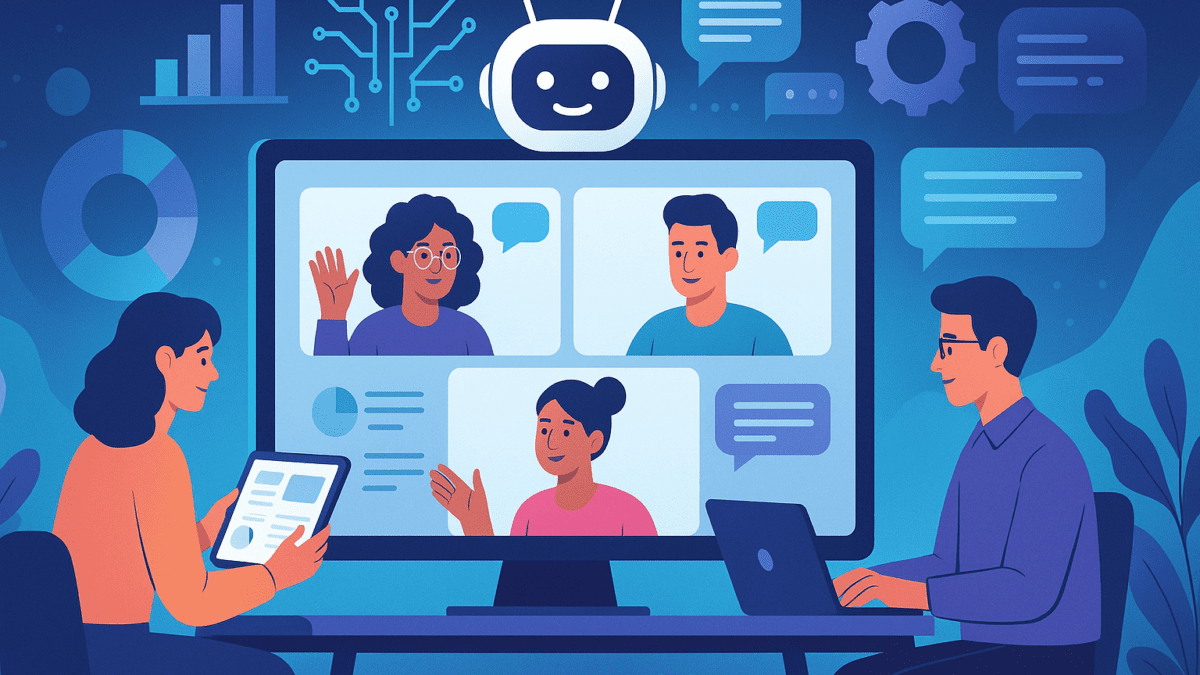The Future of Remote Collaboration: AI-Powered Tools Reshaping Work in 2025
Remote work is no longer just a trend—it has become the foundation of how global businesses operate. By 2025, AI-powered tools are reshaping collaboration, boosting productivity, and enabling seamless communication across time zones. From virtual assistants to predictive project management, artificial intelligence is transforming how teams connect, innovate, and deliver results.
In this article, we’ll explore how AI is driving the future of remote collaboration, the benefits it brings, and how businesses can leverage these tools to stay competitive.
Why AI is the Future of Remote Collaboration
AI has moved beyond simple automation. Today, it is embedded in collaboration platforms to streamline workflows, analyze data, and enhance human creativity. According to a report by McKinsey, AI could deliver up to $13 trillion in additional global economic activity by 2030, with remote collaboration being one of the biggest beneficiaries.
Here are the key drivers:
- Globalization of Workforces – Distributed teams need smarter ways to collaborate across regions.
- Data Overload – AI helps filter, prioritize, and automate decision-making.
- Efficiency & Productivity – AI reduces repetitive tasks and enables more focus on strategy.
AI-Powered Tools Transforming Remote Work in 2025
1. Smart Virtual Assistants
AI assistants are now capable of scheduling meetings, taking real-time notes, and even summarizing discussions. Tools like Microsoft Copilot and Google Duet AI are revolutionizing productivity by acting as intelligent teammates.
Key benefits:
- Automates administrative tasks
- Provides instant meeting summaries
- Improves decision-making with AI-powered insights
2. Predictive Project Management
Gone are the days of missed deadlines. AI-driven project management platforms predict risks, suggest resource allocation, and monitor team performance in real time.
Examples of features:
- Automated task prioritization
- Predictive analytics for project delays
- Smart workload balancing
Check out our Email Marketing Services to see how automation enhances efficiency across digital channels.
3. AI-Enhanced Communication Platforms
From AI-driven translation to sentiment analysis, communication tools are becoming more inclusive and context-aware. Slack, Zoom, and Teams now integrate AI features that make conversations more actionable.
Use cases:
- Real-time translation for global teams
- AI-generated action items from chats
- Sentiment tracking for team well-being
4. Virtual Reality (VR) & Augmented Reality (AR) Collaboration
By 2025, AI-powered VR/AR platforms create immersive workspaces where employees interact as if they’re physically together. These environments are enhanced with AI avatars, real-time data sharing, and 3D whiteboards.
Benefits:
- More engaging remote meetings
- Realistic team-building activities
- Enhanced brainstorming sessions
5. AI-Driven Knowledge Management
AI is now the backbone of knowledge-sharing platforms. Instead of endless file searches, employees get instant access to relevant documents, FAQs, and company insights.
Capabilities include:
- Intelligent document search
- Automated knowledge curation
- Personalized learning recommendations
Step-by-Step Guide to Leveraging AI for Remote Collaboration
- Assess Business Needs – Identify areas where AI can add the most value (project management, communication, or analytics).
- Choose the Right Tools – Select platforms that integrate with your existing workflows.
- Train Your Team – Offer training sessions so employees can maximize AI features.
- Measure Impact – Track KPIs such as productivity, response time, and employee satisfaction.
- Scale Strategically – Gradually expand AI adoption across departments for maximum ROI.
Real-World Example: AI in Remote Collaboration
A global marketing firm adopted AI-driven project management software in 2024. Within six months, they reported:
- 30% faster project delivery
- 25% reduction in missed deadlines
- 40% improvement in cross-team communication
This demonstrates how AI-powered tools directly impact productivity and collaboration outcomes.
Challenges & Considerations
While AI offers immense potential, businesses must address:
- Data Privacy & Security – Ensure compliance with data protection regulations.
- Employee Adoption – Provide training to minimize resistance.
- Cost of Implementation – Balance short-term investments with long-term efficiency gains.
The Road Ahead: AI & Human Synergy
AI will not replace humans—it’s here to augment them. In 2025, the most successful companies will be those that strike the right balance between human creativity and AI efficiency.
Remote collaboration powered by AI will not only redefine productivity but also foster inclusivity, innovation, and sustainable business growth.
Conclusion
AI is no longer optional—it’s essential for businesses embracing remote collaboration. By adopting AI-powered tools, organizations can streamline workflows, reduce inefficiencies, and create more engaged, future-ready teams.
Ready to explore how digital transformation can accelerate your business? Discover B2B Content Syndication Servicesthat can help you thrive in the AI-powered future of work.





